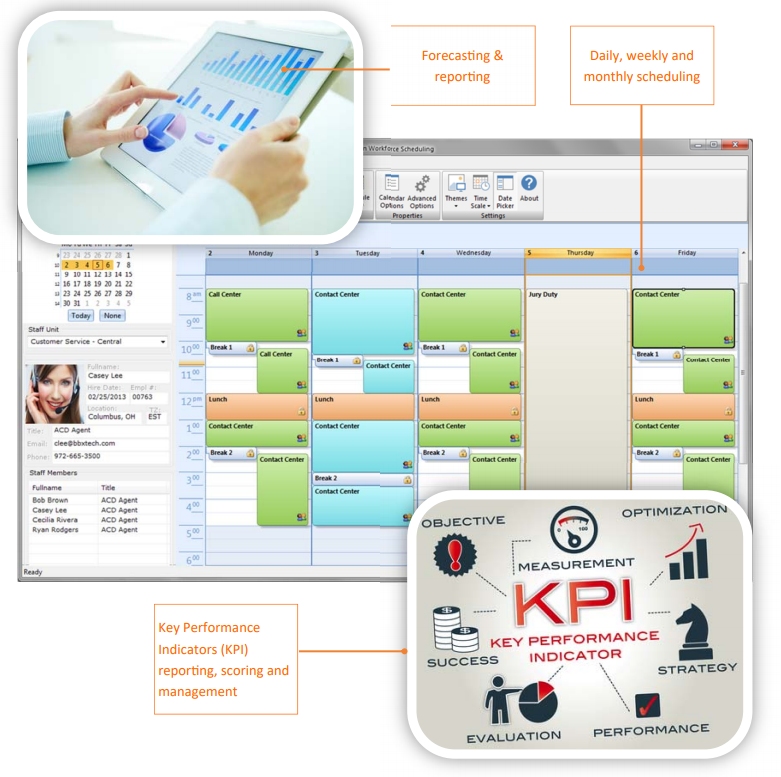Never Lose Track of Your Employees’ Productivity Again
Workforce Management (WFM)
Your contact center is a critical element of your business. It manages the automatic distribution of calls, emails, and web chats based on skill levels and other simple or complex criteria. Many studies have shown that 70% to 80% of call center expenses are related to personnel expenditures, making it essential to get the right number of agents in place every hour of every day to maximize service levels and minimize cost. It is equally necessary to manage agents’ schedules, analyze their key performance indicators (KPI), score their performance, and forecast personnel and call loads in the call center.


Scheduling
Vuesion WFM allows supervisors to create schedules on a daily, weekly, or monthly basis. These include breaks, lunch breaks, meetings, days off, vacation, and other absenteeism reasons. The agents’ presence status is clearly indicated for supervisors with color-coded icons and information. Supervisors can create and modify schedules based on agents or class of service profiles making it simpler to move agents from one schedule profile to another. Agents can view their own schedule right from their Vuesion software.
Scoring and Adherence
Supervisors are able to manage at a glance agents who exceed preconfigured low, high, and average thresholds including breaks, break time, call duration, non-call center calls, log in and logout times, productivity, and performance indicators. Agent scoring is also available from voice call recording and during agent voice monitoring sessions. Customer surveys provide additional agent scoring criteria.


Forecasting
Based on historical information in a comprehensive database, Vuesion WFM forecasts the required number of agents per group per day/week and determines the peak call loads in the call center on a time of day, day of the week, month, and quarter of the year. This allows call center managers to better prepare for upcoming traffic and the number of required agents. What-if scenarios assist managers in determining service levels based on projected call load and agents per group.
Reporting and Analytics
Real-time reporting is essential for supervisors to manage the day-to-day agent activities and performance. Historical reporting is equally as important to measure agents’ historical trends in terms of adherence, schedules, exceptions, and scoring. Supervisors can provide enhanced coaching and training to agents in order to increase their key performance indicators and provide better customer service.

